I'm trying to copy the answer from this question, I can't see what I'm doing that's different.
My output, similar to that question or here is a grouped bar plot, where this data frame:
Area Number Cat
0 item1 4 Cat1
1 item2 6 Cat1
2 item3 7 Cat1
3 item4 8 Cat1
4 item5 10 Cat1
0 item1 4 Cat2
1 item2 6 Cat2
2 item3 7 Cat2
3 item7 8 Cat2
4 item6 10 Cat2
Is grouped by area, and then each area has two conjoined bars showing the number for Cat1 and Cat2. So the output should have seven groups of bars (i.e. item 1,2,3,4,5,6,7) and each group has two bars in it, one for category 1 and one for category 2.
This code:
import sys
import pandas as pd
import seaborn as sns
import matplotlib.pyplot as plt
test_dict1 = {'item1':4, 'item2':6, 'item3':7,'item4':8,'item5':10}
test_dict2 = {'item1':4, 'item2':6, 'item3':7,'item7':8,'item6':10}
#df = pd.DataFrame({'test_dict1':pd.Series(test_dict1),'test_dict2':pd.Series(test_dict2)}).reset_index()
#df = df.set_axis(['Item', 'DictOne', 'DictTwo'], axis=1)
test1_df = pd.DataFrame(test_dict1.items(), columns=['Area','Number'])
test2_df = pd.DataFrame(test_dict2.items(), columns=['Area','Number'])
test1_df['Cat'] = 'Cat1'
test2_df['Cat'] = 'Cat2'
dfs = [test1_df,test2_df]
result = pd.concat(dfs)
print(result)
from matplotlib import rcParams
sns.set(style="whitegrid")
rcParams.update({'figure.autolayout': True})
fig, ax1 = plt.subplots(figsize=(12,6))
result.plot.bar(x='Cat', ax=ax1)
plt.tight_layout()
plt.xticks(rotation=45, ha="right")
plt.show()
produces this output:
Can someone show me where I'm going wrong?




